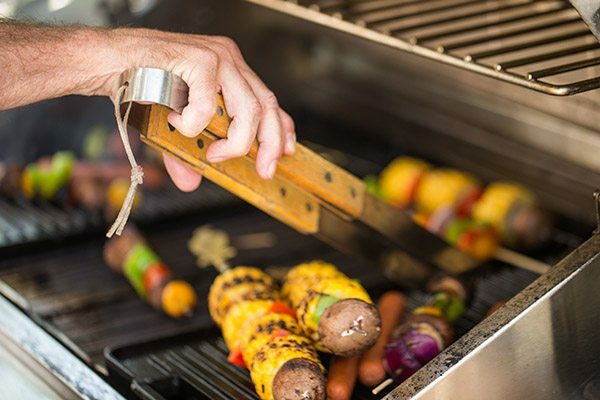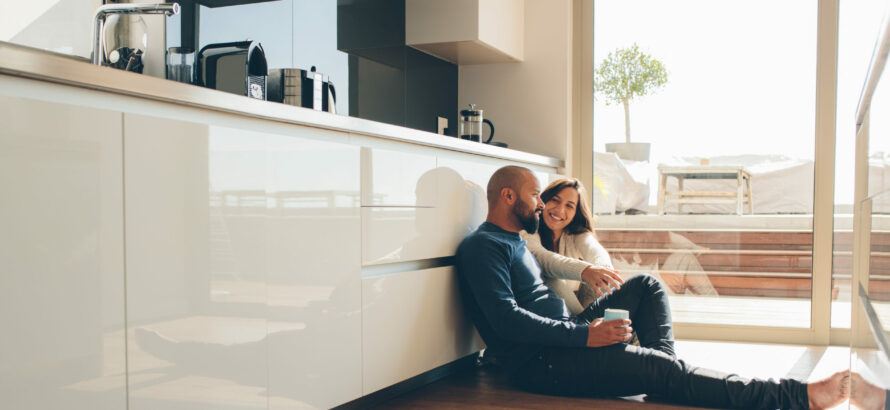
Simple fixes and smart thinking can ensure a safe environment for seniors. Stairs are the most obvious barrier to seniors hoping to stay in their homes as long as possible. But lighting, bath and kitchen design as well as access to home systems all require a top-to-bottom rethinking to ensure the elderly can manage the house and their daily lives.
Design and building professionals have become knowledgeable in the principles of “universal design,” the concept that makes the design of the house easy to navigate for everyone, not just those with compromised abilities, according to the National Association of Homebuilders. By using universal design principles to gradually adapt the home for long-term senior living, seniors can be sure that their space will meet their needs and those of visitors and health care providers.
Regina Ford, founder of Lifelong Home LLC, a Beaverton, Oregon-based consulting firm that helps seniors and families assess their homes for independent living, says the conversation is often prompted by stairs but quickly turns to other problems.
Here are some important considerations to keep in mind while making a home friendlier to seniors:
Stairs
It’s not a difficult task to make your home safe for those who have difficulty walking. The elderly will appreciate a space that’s safe and easy to navigate. While everyone is capable of falling, people under 5 and over 70 are at greatest risk—and stairs, bathrooms and kitchens are some of the most frequent location for falls. Among the elderly, accidental falls account for nearly 3 million emergency room visits per year. And, those who are most likely to fall are also most likely to be seriously injured by a fall. This means that fall prevention is especially important. Injuries from falling can be serious, with injuries ranging from bruises and scrapes to fractures, stitches and even death.
The good news is that falls can be prevented with simple precautionary measures. Apply a critical eye to your home to assess what could be a potential hazard for family members and visitors. A fall on a flat surface can cause serious injury; a fall down the stairs can be devastating. To make stairs safer:
- Make sure stairs are well lit at the top and bottom
- Use skid-resistant treads or contrasting tape on non-carpeted stairs
- Make sure carpeting is firmly attached to stairs, and avoid using throw rugs near stairs
- Install handrails on both sides of the stairs
- Do not use the stairs to store items
- If you have small children, install safety gates at the top and bottom of the stairs
Even if the homeowner can manage the stairs to the main floor, entry stairs can be problematic for bringing in walkers, wheelchairs and medical equipment. Home services that come to seniors, such as meal deliveries, medical professionals and other aids, also need a safe route inside.
Bathroom
Bathrooms and kitchens are expensive to remodel, which is why many consultants recommend integrating universal design into new projects, says Ford.
Between slick, wet surfaces and hard materials like tile and ceramic, a bathroom can create the perfect environment for a nasty fall.
- Position at least one sink and a stretch of counter in both bathroom and kitchen to be accessible for someone sitting down, either in a wheelchair or just in a chair
- Some homeowners replace the shower or bathtub with a zero-barrier, roll-in shower that has a handheld shower head, grab bars and a built-in bench
- Use rubber mats or non-slip strips in all tubs and showers, and make sure bath mats have rubber backing
- Install sturdy handrails along tubs and toilets to provide extra support
- Keep the floor free of water and spills
- Install a nightlight to help with nighttime navigation
- Replace ball-style faucet handles and traditional doorknobs with levers. Levers are easy to manage even with limited grip strength, and they don’t tax arthritic hands
Kitchen
Kitchens, like bathrooms, are risky because of hard, slippery surfaces. Plus, they’re high traffic areas that can make maneuvering difficult.
- Clean up spills immediately
- Use a sturdy step stool to reach high spots
- Always use the waist and center restraints in high chairs and infant seats
- Store children’s snacks in lower locations to prevent climbing
- Push chairs and stools into the counter and table to prevent tripping
Lighting
Overhead but often overlooked, lighting is a key component to independent living. Lights need to be brighter to offset deteriorating vision, and controls need to be positioned for easy access by people using wheelchairs or walkers, says Ford. Temperature, sound and home safety monitors and controls also need to be similarly situated. When electrical work is scheduled, it’s smart to add a few outlets at the same height, for plugging in nightlights where walkers won’t bump them.It would also be beneficial to plug in powerful nightlights for all bathrooms and hallways.
Flooring
Hardwood floors are easier for wheeled supports and shuffling seniors, but it’s the transition between one type of floor and another – say, from wood to carpet – that’s often a tripping hazard, says Ford. Removing or minimizing thresholds and transitions between rooms can smooth daily living and help minimize falls.
Check to make sure there isn’t any loose wiring or cords on the floor. Not only is this a potential tripping hazard, but can also be an electrical fire risk.
Home security
While not exclusive to senior living, home security systems can offer protection as well as peace of mind. Make sure to arm or turn on the system, otherwise it may not protect you.
Home evaluations for seniors
Finding someone who can anticipate seniors’ needs involves more than calling the local handyman, says Ford. Independent living consultants charge about $200 and up to evaluate a modest-sized house. The National Association of Homebuilders offers in-place consultants but, says Ford, it’s important to understand how builder-affiliated consultants are paid, as fees for some are folded into a remodeling project bid.
“Be proactive,” she says. “Think about these things while you’re healthy and when you’re young enough to pay for construction.”
Create comfort
Make sure your guest truly feels at home. Senior adults should feel safe, both physically and emotionally. To accomplish this:
- Be sure doors are wide enough to accommodate a walker or wheelchair
- Place a sturdy table with a tip-proof lamp beside the bed
- Position a cushioned chair near the closet or bureau to make getting dressed easier
- Make sure your water heater temperature is low enough to prevent scalding
- Add a television or radio to the bedroom, if your loved one would like one
- Encourage your loved one to bring reminders of home, such as photos, pillows or other special item
- If you are welcoming a senior person into your own home, invite your loved one to participate in household activities, like meal planning or movie night
- Check in from time to time to ask if there is anything else you can do to make your home more comfortable
Learn more now about how you can design your space with senior citizen safety in mind. Don’t forget that if you make any significant changes to your home, it’s a good idea to get a home insurance check-up to ensure your home is covered. Finally, proper home insurance coverage can protect you if your efforts to protect guests from falls proves unsuccessful.



